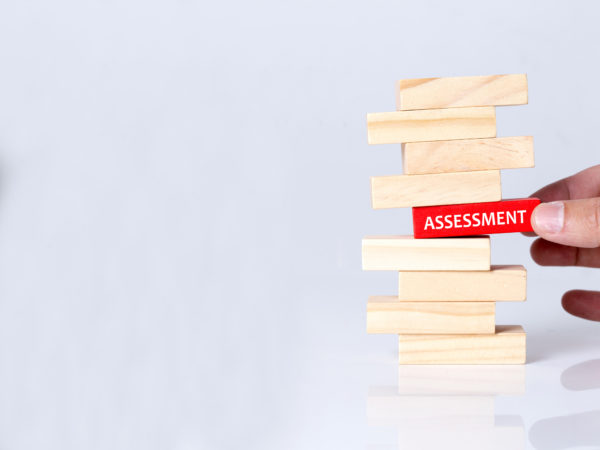Across the country, educators and policy makers are searching for ways to develop and implement innovative assessment programs to address accountability requirements and to reform instruction. As both local and state educators consider new assessment models, they find themselves coming up against many issues of time. It’s widely agreed that there’s too much time spent on testing and test prep, and there’s too little time to teach and take on additional responsibilities to transform instruction. Educators often feel that innovation represents an additional burden on their time rather than a benefit.
Since the last big push to reform instruction and assessment nearly a quarter century ago, we’ve developed new psychometric techniques as well as new technologies to assist us in our attempts to innovate.
Internet access, electronic collection of student work, and online distributed scoring, for example, can all play significant roles in making performance assessments more manageable and efficient.
Problem: Time and effort burdens
Many recent efforts have not adhered to a fundamental principle that must be followed if performance assessment is to have a chance of surviving this time around. That principle is this: Efforts to take performance assessment to scale must minimize or eliminate additional burden on local educators.
One way to follow the “minimal burden” principle is by providing time-saving instructional approaches and tools (e.g., online instructional resources) that replace or modify things teachers are already doing or using. The general strategy upholding the principle is to replace; don’t add on.
An effective way to follow the “replace; don’t add on” maxim is to use curriculum-embedded performance assessments (CEPAs). As defined by Hofman, Goodwin, and Kahl (2015), a CEPA is a multi-day instructional module that consists of a series of instructional activities. Some of the activities lead to student work that can be used in both formative and summative assessment processes. The parts of the CEPAs that require students to produce scorable products or demonstrations are performance tasks built into the instructional modules from the get-go. Alignment of the assessment tasks to instruction is guaranteed.
CEPAs are used in place of, not in addition to, instructional units or parts of units that teachers have been using. Marion and Shepard (2010) promote “replacement units,” which are similar to CEPAs, but focus exclusively on formative purposes. Because both types of units include recommended activities and resources and provide assessment tools, techniques, and scoring rubrics, the teachers, in effect, are given tried-and-true lesson plans.
(Next page: Teacher input and ownership for performance assessments)
Problem: Not enough teacher input and ownership
While CEPAs provided to teachers can be tremendously helpful, teachers may want to incorporate their own input into these instructional units. This can be accomplished in several ways:
- Teachers can have flexibility implementing instructional activities in the CEPAs—except for those that lead to summative student work.
- Initial CEPAs developed by state teacher committees, vendors, or district consultants can serve as models for teachers if and when they develop their own. For state programs, teacher-developed CEPAs can be submitted to the state for review, revision, and pilot testing.
- Whether for local or statewide assessment, teachers can choose the CEPAs they want to incorporate into their instruction.
- Teachers can score their own students’ work on CEPAs, making the results immediately available.
Problem: Implementation troubles
Implementing a statewide CEPA program has a strong advantage because it won’t place a tremendous burden on local educators. This audience is frustrated with current state assessment programs and asking for local assessments to count towards accountability results, so states should not find it difficult to “sell” the approach.
So what about the cost, effort, and time required for a state department of education? To save on time and money, just one CEPA can be used for the first year. The state can use the initial CEPA to test out and refine the sample student work collection approach, score auditing, adjustment techniques, and psychometric procedures for merging performance scores with the results of the end-of-year assessment.
More benefits of CEPAs
Over subsequent years, a robust program can take shape. CEPAs can provide both accountability results and evidence of learning that educators can use to inform instruction. Such a program can provide a variety of benefits.
- As more CEPAs become available, states can work toward having three that count.
- Over time a bank of CEPAs can be built, and teachers or schools can choose which they want to use for accountability.
- Statewide results on the performance tasks within the CEPAs can provide the comparability required by ESSA.
- The CEPAs would be reusable, without concerns about test security as long as teachers follow directions regarding the summative performance tasks within the CEPAs.
The state’s end-of-year assessment can also be much shorter if a few CEPAs are used during the year.
We can “get it right”
I’ve been involved in large-scale performance assessment efforts for well over three decades, and I can say with certainty that while we’ve learned a lot of lessons, we have yet to get performance assessments right, but we still have the ability to make it happen with the right principles.
Only by minimizing the burden on educators and phasing it into local instructional programs can we give this valuable model a chance. Implemented thoughtfully and over time, performance assessments can become a significant contributor to both instruction and accountability assessment.
- How digital tools and AI can enhance social studies - April 23, 2024
- Using universal screening to improve student well-being - April 22, 2024
- 3 ways to avoid summer learning loss - April 19, 2024


